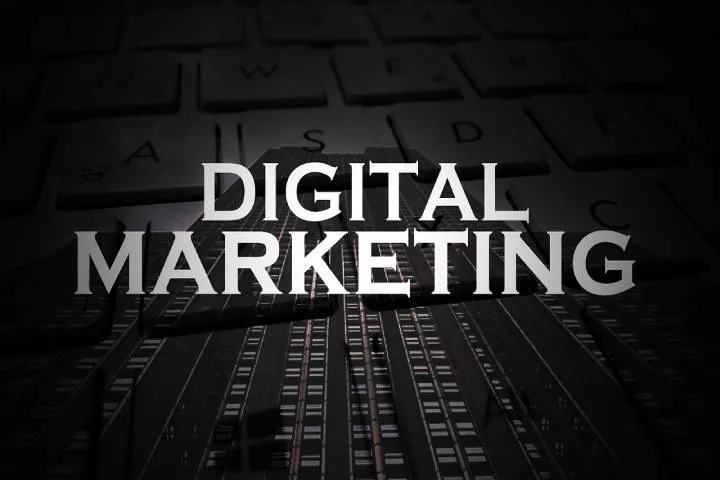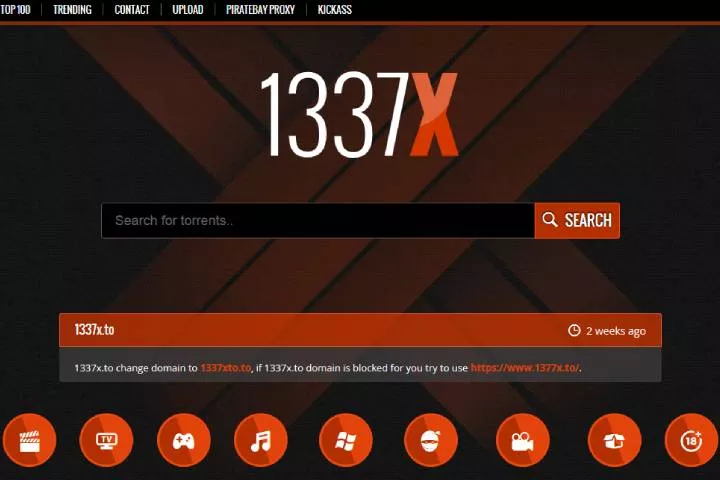Digital Marketing
Does your website have a poor conversion rate? Here’s what could be wrong with it
If you’ve noticed that your business website continues to have a low conversion rate despite your best efforts, you have to get that fixed sooner rather than later.

Having an average website was not such a big deal for businesses back in the day. Websites were nothing more than a place where you could find a bit of information about a particular company. Fast forward to today, and things have changed dramatically.
Nowadays, websites play a crucial role in the success of a business. In most cases, they represent the first point of contact for customers, serving as the primary source of information and a virtual storefront. In other words, a website has the power to make or break a business.
Business owners know just how vital site performance is for their potential customers and how much their expectations have grown over the years, so there’s no excuse for having a lousy website right now. Unfortunately, many websites fail to meet customers’ demands, which translates into poor conversion rates.
If you’ve noticed that your business website continues to have a low conversion rate despite your best efforts, you have to get that fixed sooner rather than later. However, if your tech knowledge is limited, it can be challenging to determine where the problem lies precisely. Hopefully, this short guide can help you find out what’s wrong with your site, so you can come up with a suitable solution to fix the problem.
Table of Contents
1. Too little or too much content
Have you ever accessed a site searching for information to find out there’s not much to see there? Or, by contrast, come across a site that dazzles you with an overwhelming amount of information? Well, don’t be like those websites.
When users visit your site, they hope to find accurate and relevant information about your business – something that can tell them who you are and what you do so that they can form an opinion. If they don’t find what they’re looking for, there’s no reason for them to waste their time on your site.
The same thing happens when too many things are happening – pictures, texts, videos, all competing for their attention. People will forget why they are there in the first place, which will do no good to your conversion rates.
You have to provide your audience with exciting and relevant content to spark their interest and provide them with the answers they were looking for, but not so much as to bore or confuse them.

2. It takes ages to load
Site speed and performance play an essential role in keeping customers happy and boosting conversion rates. Website visitors these days demand fast loading times, and their expectations are increasing all the time. Studies show that 40% of users will leave a site if it takes more than three seconds to load. Therefore, loading times directly impact your conversions and your bottom line.
Every second counts, so if it takes an eternity for your pages to load, it’s no surprise your conversion rates are low. Usually, the main culprits for a website’s slow speed are the number of images, large file size, unnecessary code, or excessive use of CSS and JavaScript, so you might want to check these points first.
3. It’s not visually appealing.
The first impression counts when landing on a site, and you don’t get a second chance at it. If a user doesn’t like what he sees when he first visits your site, it’s doubtful he will stick around or come back for a second time. That might be why your site is getting traffic, but it’s not converting.
Things like crowded features, uninspired color combinations, low-quality images can hurt the visual appeal of your site and push potential customers away. Maybe it’s time for your website to get a makeover to fix any design problems that might have escaped your eye. Consulting with a web design agency in New York can help you identify these issues and make the necessary changes. Hence, your site has better chances of attracting and converting customers.
4. It’s not optimized for mobile.
Guess what else can drive customers away? Leaving mobile optimization out of the equation. It’s a well-known fact that the number of people using mobile devices to browse the internet is rising. So, if your website looks great on desktop but displays poorly on mobile devices, you’re simply ignoring the needs of a large segment of your customers.

Keep in mind that plenty of other businesses have taken the time to make their websites responsive, and customers won’t hesitate to take their business elsewhere if your site doesn’t meet their expectations. To put things simply, you can’t afford to have an unresponsive site these days.
5. There are no CTAs
Calls to action or CTAs are indispensable for business sites, as they guide customers on their buyer’s journey. Not including clear CTAs on your website is a huge mistake that you must fix right away.
It’s not enough to have many users visiting your site. They also have to act, whether signing up for your newsletter, signing up for a free trial, or purchasing your products/services. CTAs come into play, encouraging users to take action and leading them further down the conversion process.
6. It’s not intuitive
Your website’s looks matter a lot, but visual appeal is worth nothing if it’s not doubled by usability. When visitors land on your site, they have to find what they’re looking for with ease and know exactly what to do each step without overthinking. That’s what intuitive design is all about.
A poorly organized site with elements scattered all over the place, making navigation difficult for users, will have a poor conversion rate. The key is to keep things clear and straightforward to ensure smooth and hassle-free navigation for all visitors.
There are plenty of other things you could do to improve the appeal of your website and increase your conversion rates, but the aspects we’ve listed above provide a good starting point.
Digital Marketing
How SEO Proxies Can Help to Promote Your Website
SEO proxies are an invaluable tool for website promotion and can provide many advantages to businesses seeking to improve their online presence.

SEO proxies can be a powerful tool for improving your website’s visibility and helping you reach a wider audience. By using proxies, you can effectively manage your search engine optimization efforts without having to worry about your IP address being blocked or restricted by certain websites.
In this blog post, we’ll explore the ways in which SEO proxies can help you promote your website and improve its rankings on search engine results pages. We’ll also look at some of the common challenges associated with using proxies and how to address them. So, if you’re looking to give your website a boost, read on for the details!
Table of Contents
1. What Is an SEO proxy?
An SEO proxy is a dedicated server or computer program that enables users to access search engines and websites without revealing their actual IP address. With an SEO proxy, website owners and marketers can conduct market research, track advertising campaigns, and analyze competitor websites without getting blocked or banned by search engines.
By routing internet traffic through different IP addresses and geographical locations, an SEO proxy essentially makes it virtually impossible for search engines and websites to identify and block user activity. Moreover, SEO proxies come with advanced settings and protocols that help safeguard the user’s identity and privacy, ensuring a safe and uninterrupted browsing experience.
Whether you’re a small business, an established website owner, or a digital marketing agency, an SEO proxy can help you optimize your online strategies and achieve long-term success.
2. How Do SEO Proxies Work?
SEO proxies are a powerful tool for those who want to improve their website’s search engine ranking. These proxies work by allowing users to conduct research on search engines without revealing their location or IP address. Through SEO proxies, users can monitor their website’s rankings, track the performance of their competitors, and get an edge over them.
This is because these proxies make it possible to access a variety of search engine results pages (SERP) from different locations, allowing users to get accurate data on their website’s performance in different markets. SEO proxies are an important tool in any digital marketer’s arsenal and can help businesses stay ahead of the competition.
3. Why Are SEO Proxies Important for Website Promotion?
In today’s digital world, website promotion plays a crucial role in determining the success of a business. With so many companies vying for online visibility, it’s important to have an edge. That’s where SEO proxies come in. By using proxies, website owners can automate the process of collecting valuable data and analyzing their competition.
This allows for more informed decision-making when it comes to optimizing their website for search engines. Netnut, a leading provider of premium residential proxies, offers a reliable solution for businesses seeking to improve their SEO strategy.
Their proxies offer high-speed connections and low failure rates, ensuring that website owners have access to accurate and up-to-date information. In short, using SEO proxies can be the difference between being lost in the noise of the internet and standing out as a successful online business.

4. Benefits of Using SEO Proxies
Increased Website Traffic
Website traffic is a crucial component of any successful online presence, and the benefits of using SEO proxies cannot be overstated. By utilizing these specialized tools, businesses and individuals can increase their website traffic through more accurate and effective data gathering.
This allows for improved targeting, optimization, and overall performance. With the right SEO proxy, valuable insights into organic search results, keyword rankings, and other crucial metrics can be gleaned with ease.
This translates to increased engagement and conversions from potential customers. Investing in SEO proxies is a smart choice for anyone looking to boost their online traffic and improve their performance in today’s competitive digital landscape.
Improved Search Engine Rankings
Search engine optimization (SEO) is vital to any business or website looking to increase visibility and traffic. One crucial aspect of SEO is utilizing SEO proxies, which can provide many benefits for improving search engine rankings.
A reliable SEO proxy allows businesses to leverage a diverse range of IP addresses while conducting keyword research, competitor analysis, and backlink monitoring. This ability to access different IP addresses makes it easier to avoid detection by search engines, which can protect businesses from penalties and keep their SEO strategies on track.
Furthermore, SEO proxies provide businesses with the opportunity to analyze the competition and optimize their own website more effectively. By using SEO proxies, businesses can gain a competitive edge in the online world, boost online visibility, and improve search engine rankings.
Increased Brand Awareness
As businesses continue to evolve and expand their online presence, the significance of search engine optimization (SEO) cannot be ignored. The use of SEO proxies has proven to be an effective method for boosting brand awareness and improving your SEO rankings.
These proxies offer a secure and anonymous way to access search engines and gather valuable data without being blocked or banned. In addition, using a diverse range of private proxies can provide you with a competitive advantage over your competitors.
By utilizing SEO proxies, you can gain access to local search queries and improve your targeting efforts, ultimately leading to a greater online presence and increased brand awareness.

Enhanced Security
With the ever-growing number of online businesses, SEO has become a key element in ensuring organic traffic to a website. However, achieving success in SEO requires more than just targeting the right keywords.
With the use of SEO proxies, businesses gain access to a wide range of IP addresses, allowing them to bypass restrictions and gain valuable insights into their competitors’ marketing tactics. But beyond the advantages of scraping search engines and protecting sensitive data, SEO proxies also enhance security.
By concealing their real IP addresses and using a rotation system, businesses can thwart hackers and protect themselves from cyber-attacks. With the benefits of using SEO proxies, businesses can focus on improving their website’s ranking without worrying about data breaches.
5. How to Enhance SEO with Live Proxies
Live Proxies provide significant advantages for SEO efforts, making them an essential tool for digital marketers and SEO professionals. Their extensive network of over 10 million IPs, which includes rotating residential, static residential, and mobile proxies, is ideal for comprehensive and anonymous web scraping. This capability is vital for gathering precise SEO data such as keyword rankings, competitor analysis, and search engine results page (SERP) monitoring without risking IP bans or blocks.
Furthermore, the high-quality IPs offered by Live Proxies ensure dependable access to geographically specific search results, enabling SEO experts to fine-tune their strategies for targeted audiences in various regions such as the US, CA, UK, and RL.
The availability of different IP types, including mobile IPs, offers a distinct advantage, particularly in mobile SEO, which is increasingly crucial given the rising importance of mobile search in Google’s rankings. Live Proxies are versatile, catering to the needs of both individual SEO consultants and large SEO agencies, providing scalability and customizable plans to suit various requirements.
Their reliability in offering uninterrupted and real-time connectivity positions Live Proxies as an indispensable asset in executing and elevating SEO campaigns, ultimately enhancing search engine visibility and effectiveness.
6. Factors to Consider When Choosing an SEO Proxy
An SEO proxy is an essential tool for any digital marketer looking to improve their search engine optimization efforts. Choosing the right proxy can be challenging, as there are several factors to consider. In this section, we will discuss some of the most important factors to keep in mind when selecting an SEO proxy.
Location
The location of the proxy server is an important factor to consider when choosing an SEO proxy. The closer the proxy is to your target audience, the faster it will be able to load web pages. This is particularly important if you are targeting a specific geographical location. For example, if you are targeting users in the United States, you should choose a proxy that has servers located in the US.
Speed
Speed is another critical factor to consider when selecting an SEO proxy. A fast proxy will allow you to scrape data quickly and efficiently, which is essential for successful SEO campaigns. Look for proxies with low latency and high bandwidth to ensure fast performance.
Security
Security is an essential consideration when selecting an SEO proxy. Ensure that the proxy you choose offers encryption and other security features to protect your data from hackers and other online threats. Look for proxies with built-in security protocols such as SSL or HTTPS.
Reliability
Reliability is crucial when choosing an SEO proxy. The last thing you want is for your proxy to go down in the middle of a critical SEO campaign. Look for proxies with high uptime guarantees and 24/7 customer support in case anything goes wrong.
Price
Finally, price is always a consideration when selecting an SEO proxy. While it may be tempting to choose the cheapest option available, remember that you get what you pay for. Look for proxies that offer a good balance of features, reliability, and affordability. Consider the cost of the proxy against the potential ROI of your SEO efforts to determine the best value for your business.
In Conclusion
SEO proxies are an invaluable tool for website promotion and can provide many advantages to businesses seeking to improve their online presence. With the help of these specialized servers, users can access search engines from multiple locations without revealing their true IP address.
This allows them to collect valuable data, monitor competitors, and optimize their SEO strategies with ease. SEO proxies also provide enhanced security, improved search engine rankings, increased website traffic, and brand awareness

 Instagram3 years ago
Instagram3 years agoBuy IG likes and buy organic Instagram followers: where to buy them and how?

 Instagram3 years ago
Instagram3 years ago100% Genuine Instagram Followers & Likes with Guaranteed Tool

 Business5 years ago
Business5 years ago7 Must Have Digital Marketing Tools For Your Small Businesses

 Instagram4 years ago
Instagram4 years agoInstagram Followers And Likes – Online Social Media Platform





















